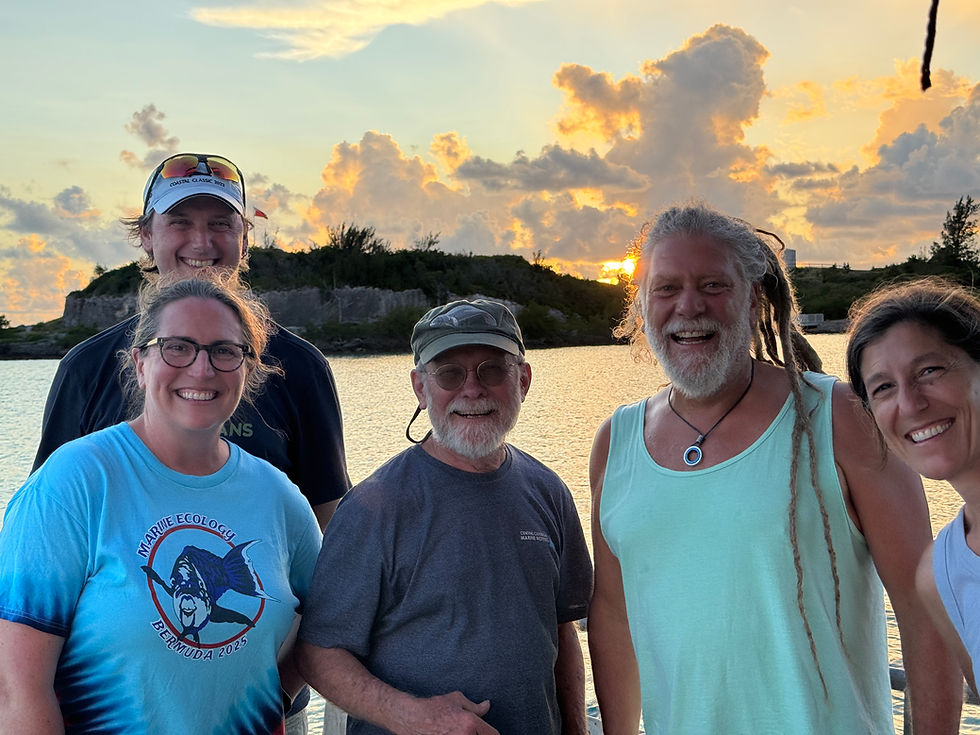Bermuda Day 2 - July 7th
- Lucy Badger
- Jul 7
- 2 min read
Updated: Jul 8
By Chloe, Lucy, and Charlie
This morning after breakfast, we all got on the bus and headed to Cooper’s Island for a snorkel! When we arrived, it was a very short walk right to the beach, where we got suited up and into our groups. Once organized and ready, we all headed into the water. It was windier than Whalebone Bay, but still relatively calm. We started along some rocks that led to a small rocky island. We saw some new sightings today, such as a flounder and a trumpet fish! After a while, we headed back and snorkeled the other side of the beach! We then headed back to BIOS.
After heading back to BIOS, we left to see St. Catherine’s fort, the unfinished church, and St. George. Fort St. Catherine was built in 1614, and expanded its infrastructure 4 more times until 1882. A highlight was the shell store, which held Palliser shots and Palliser shells (used against steam ships), Common shells (against unarmored ships), and Case shot (against close enemies and troops. We walked to the unfinished church, which was partially constructed until many people left for Hamilton, and they ran out of money to keep building. In St. George, we walked through town and got ice cream!
After dinner, we all went to a lecture hall. Alex, an instructor at BIOS, presented a slideshow about the anatomy of an oceanic island. There were two main topics presented, information on the Sargasso Sea, as well as how Bermuda formed and became the island it is today. The Sargasso Sea is the only sea bordered completely by water and has a type of seaweed known as “Sargassum” (a species of seaweed that floats on top of the water and never lays roots), this seaweed has 5 endemic species (meaning they aren’t found anywhere else), such as, a species frogfish, species of crab, species of shrimp, the sargassum nudibranch, and Eel Larvae. We also talked about Bermuda, how it formed from a volcano and how the edges of the reef drop drastically (making it great for deep sea ocean studies), how it is covered in limestone and has many limestone caves (filled with stalactites and stalagmites, long cone shaped structures formed slowly over 70,000 years due to dripping water and minerals), the reason for the islands famous pink sand, and how things such as soil, plants, and animal species arrived to the island (some arrived naturally and some were human introduced). Afterwards, we divided into our snorkel groups and were able to submit our data from the earlier snorkel.

























Comments